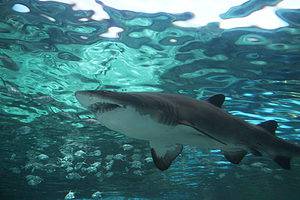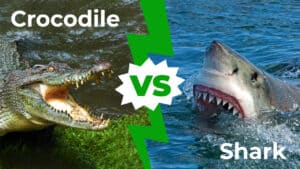Continue reading for our analysis...
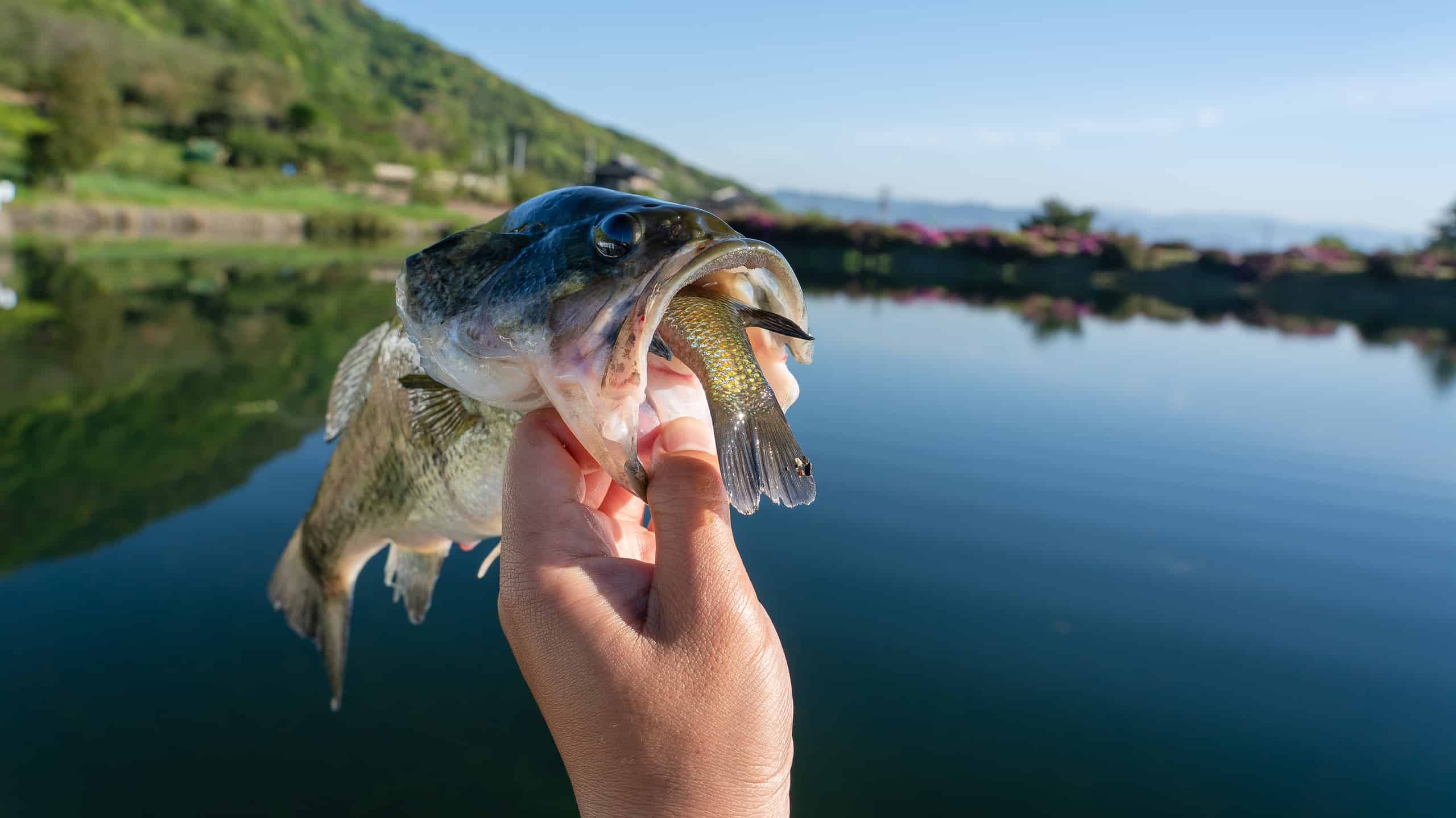
You have never seen a video quite like this one. The amount of prey that northern pike can occasionally take is astounding considering how ravenous they are. A startling YouTube video shows an oddity when a fisherman catches a northern pike with something inside its belly.
After viewing the opening few moments of the video, some viewers assumed the pike had ingested a smartphone or even a turtle. Since license plates, wallets, and other items left by humans are sometimes found in the belly of a fish, the initial sight of a good-sized panfish being dragged from the pike can be disappointing.
At one point, the fisherman says he thinks it’s another living creature that you may see floating on a log. The cameraman guesses a crab, but we all know they were expecting to remove a turtle!
As soon as they cut open the pike, a bluegill spills out and is completely still. The bluegill suddenly starts beating its tail on the fish-cleaning table as they begin to giggle uncontrollably in shock that the fish is still alive.
Even if a species notorious for cannibalism would not be surprised to see a panfish swallowed completely, it is nevertheless a stunning sight. In addition to finding enormous spoons and other lures within these fish, stories of northern pikes leaping out of the water like sharks to snag voles racing along the shore.
Northern Pike Feeding Behavior
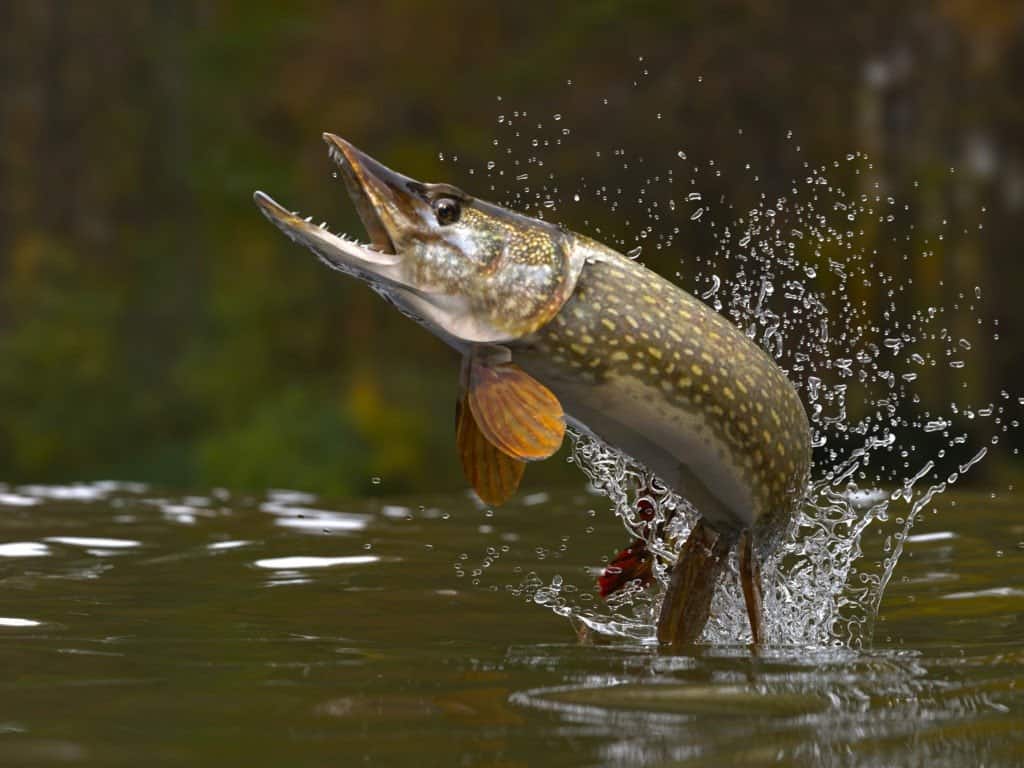
Northern pike will leap out of the water to catch birds.
©bekirevren/Shutterstock.com
The northern pike is a daylight feeder and an aggressive predator that lies in wait. Although a northern pike primarily consumes other fish, it will go after any animal that can fit within its mouth.
This includes rats, snakes, turtles, and even other pikes! Mature northern pike do particularly enjoy suckers and yellow perch. To catch their prey, northern pike frequently stalk it from underneath before swallowing it whole, just like a gator.
Impressively, a blind pike may capture fish by sensing vibrations in the water with its lateral line sense! They are also one of the fastest-growing fish and can live for nearly 20 years.
Northern Pike Predators

Ospreys eat almost entirely fish and thrive by living near large bodies of water.
©BlueBarronPhoto/Shutterstock.com
Young pike are naturally fairly small when they first appear and are devoured by almost anything that consumes fish, notably larger fish, serpents, otters, and a broad range of food such as osprey, turtles, and even dragonflies.
Their predator pool gets smaller as they get bigger. Sometimes, bigger pike will consume smaller ones. The only notable predators of adult pike, which may grow to over four feet long and are skilled hunters themselves. The one predator they can’t escape? Humans.
Is It Normal for Northern Pike to Eat Other Fish?
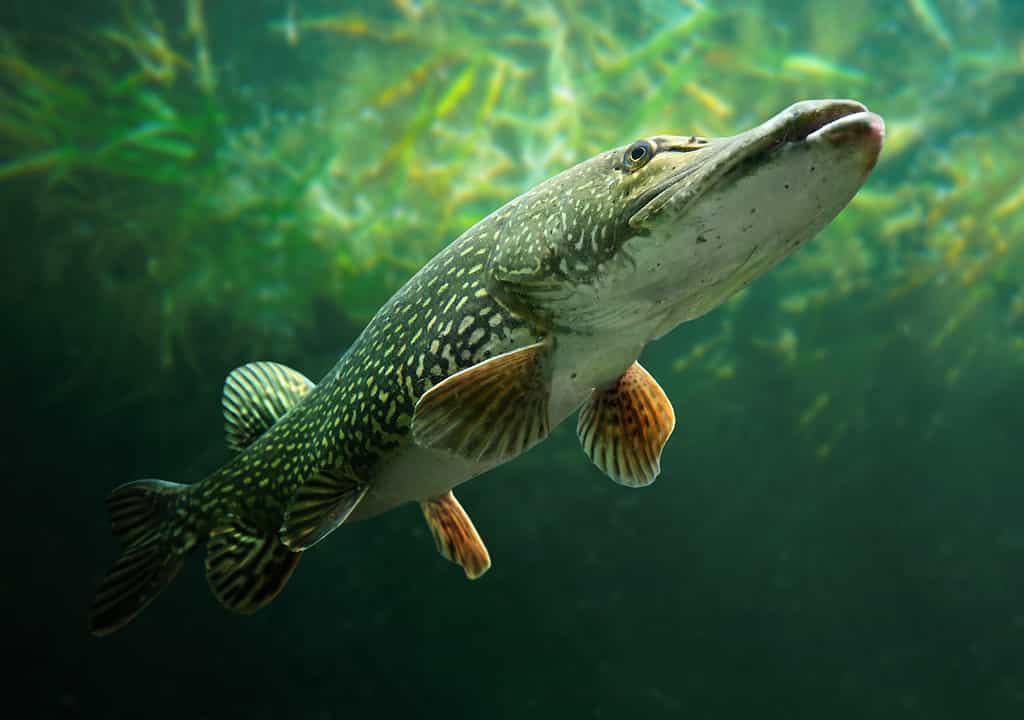
Did you know that the Northern pike can reach 59 inches long? Their average size is 18-24 inches long.
©iStock.com/abadonian
Yes, it is completely normal for Northern Pike to eat other fish. In fact, they are one of the most voracious predators in freshwater habitats. They will feed on anything that fits into their mouths including other fish (such as trout or bass), frogs, small mammals, and even birds. Northern pike have sharp teeth which help them tear apart their prey quickly and easily.
Northern pike usually hunt alone rather than in large groups like some species of fish do. They usually wait in ambush near weeds or other hiding places, and then strike their prey quickly. This means that they can often catch unsuspecting fish quickly and easily before the prey even has a chance to escape.
Although Northern Pike are predators, they also form an important part of the food chain as many species of fish rely on them for sustenance. Their presence is key to maintaining healthy freshwater habitats throughout North America.
Thank you for reading! Have some feedback for us? Contact the AZ Animals editorial team.




